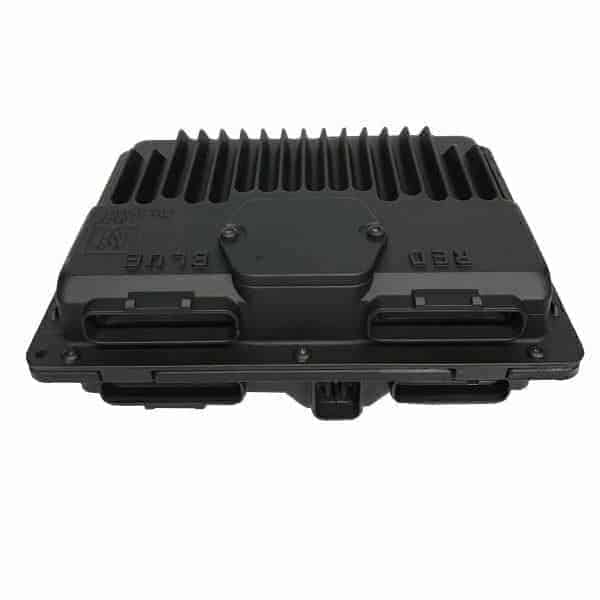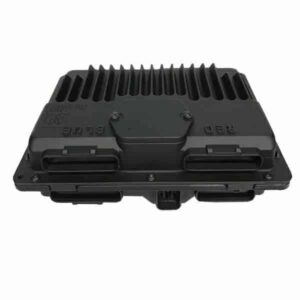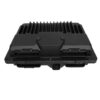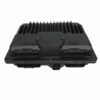Restore Peak Performance to Your GM Truck or Van
Is your trusty 1998 Chevy S10, GMC Sonoma, or another GM vehicle from that era running rough, stalling unexpectedly, or throwing confusing check engine lights? Before you spend a fortune at the dealership or start replacing random sensors, the problem could be the very brain of your engine: the Powertrain Control Module (PCM). As a technician with over two decades of experience under the hood, I’ve seen firsthand how a failing PCM can cause a cascade of frustrating issues. This isn’t just a part; it’s the solution to getting your reliable vehicle back on the road with confidence.
This is a thoroughly tested, used OEM 1998 S10 Sonoma PCM that offers a dependable and cost-effective fix. The single most important benefit we offer is that this module arrives at your door completely programmed to your vehicle’s specific VIN. We flash it with the latest GM factory software updates, ensuring optimal fuel delivery, ignition timing, and transmission shifting. This eliminates the need for expensive programming services, making it a true plug-and-play solution for both seasoned mechanics and determined DIYers.
From the Diagnostic Bay: The Ghost in the Machine
A customer brought in his ’98 GMC Jimmy S15 with a complaint that stumped a couple of other shops. It would randomly stall at stoplights and had a persistent P0300 (Random Misfire) code. They had already replaced plugs, wires, the cap, and the rotor. My scan tool showed erratic sensor readings, but all the sensors tested fine individually. This pointed to the central processor. After confirming the wiring harness was intact, we swapped in a VIN-programmed PCM like this one. The engine immediately smoothed out, the misfires vanished, and the erratic data streams stabilized. It wasn’t a faulty sensor—it was the computer misinterpreting the data. This is a classic failure mode for these modules, and a correctly programmed replacement is often the only real fix.
Is Your Truck Showing These Telltale Signs?
A failing PCM can manifest in numerous ways. If you’re experiencing any of the following, this module is a likely culprit:
- ✔ Check Engine Light is on with communication error codes (e.g., P0601, P0605, P0606).
- ✔ The engine cranks but refuses to start.
- ✔ Unexplained stalling or rough, inconsistent idling.
- ✔ Noticeable decrease in fuel economy.
- ✔ Harsh or erratic automatic transmission shifting.
- ✔ Failure to pass an emissions or smog test.
- ✔ No communication with your OBD-II scan tool.
Your Straightforward PCM Installation Guide
Installing your programmed 1998 S10 Sonoma PCM is a manageable job for anyone with basic tools. Follow these steps carefully for a successful replacement.
- Safety First: Always disconnect the negative terminal from your vehicle’s battery and wait at least 15 minutes for any residual power to dissipate.
- Locate the PCM: On most of these trucks and vans (like the S10/Sonoma, Blazer/Jimmy), the PCM is located in the engine bay, often on the passenger-side fender well or near the battery. It’s a silver metal box with multiple large electrical connectors.
- Disconnect Connectors: Carefully unclip and remove all electrical harness connectors from the old PCM. These connectors have locking tabs; be gentle to avoid breaking them.
- Remove the Old Module: Unbolt the mounting hardware holding the old PCM in its bracket. Remove the module from the vehicle.
- Install the New Module: Place your new, pre-programmed PCM into the mounting bracket and secure it with the original bolts.
- Reconnect Everything: Firmly plug all the electrical connectors back into the new PCM. You should hear or feel a click as they lock into place. Reconnect the negative battery terminal.
- Security Relearn (If Necessary): While we program the core functions, some GM vehicles may require a simple key-cycle security relearn procedure. Turn the key to the ‘ON’ position for 10-15 minutes, then ‘OFF’ for 10 seconds. Repeat this two more times. On the fourth try, the vehicle should start.
Verified Fitment For These GM Models
This module, identified by service number 16250279 or ID 9355699, is a direct replacement for a wide range of GM vehicles. It is compatible with part numbers 09355699, 16266645, 9355699, 16250279, 16258815, 09366810, and 9366810. Please verify your vehicle is on this list:
- ASTRO 98
- BLAZER S10/JIMMY S15 98 (4.3L)
- BRAVADA 98 (4.3L)
- CHEVROLET 1500 PICKUP 98-99
- CHEVROLET 2500 PICKUP 98-99 (Gas)
- CHEVROLET 3500 PICKUP 98-99 (Gas)
- ENVOY 98 (4.3L)
- ESCALADE 99
- EXPRESS 1500 VAN 98-99
- EXPRESS 2500 VAN 98-99 (Gas)
- EXPRESS 3500 VAN 98-99 (Gas)
- GMC 1500 PICKUP 98-99
- GMC 2500 PICKUP 98-99 (Gas)
- GMC 3500 PICKUP 98-99 (Gas)
- ISUZU HOMBRE 98 (4.3L)
- S10/S15/SONOMA 98 (4.3L)
- SAFARI (GMC) 98
- SAVANA 1500 VAN 98-99
- SAVANA 2500 VAN 98-99 (Gas)
- SAVANA 3500 VAN 98-99 (Gas)
- SUBURBAN 1500 98-99 (Gas)
- SUBURBAN 2500 98-99 (Gas)
- TAHOE 98-99 (Gas)
- YUKON 98-99
By purchasing this 1998 S10 Sonoma PCM, you are getting a reliable part that is ready for installation right out of the box, saving you time, money, and the headache of a trip to the dealer. Just provide your VIN at checkout, and we’ll handle the rest.
Why do I need to provide my VIN?
Why do I need to provide my VIN?
Your Vehicle Identification Number (VIN) is essential because it allows us to program the PCM with the exact software and calibrations your vehicle requires. This includes engine size, transmission type, and any specific options your truck came with from the factory. This VIN-specific programming ensures perfect compatibility and performance.
Is this a new part?
No, this is a high-quality, tested used OEM (Original Equipment Manufacturer) part sourced from a salvaged vehicle. We inspect and verify each unit to ensure it’s fully functional before programming and shipping, offering you a reliable and affordable alternative to a costly new module.
Will I need to do anything after installation?
In some cases, you may need to perform a Crankshaft Variation Relearn (also known as CASE Relearn). This procedure can typically be done with a capable bidirectional scan tool. Additionally, some vehicles may require a simple security relearn, which involves cycling the key in the ignition as described in our installation guide. These procedures ensure the PCM is fully synced with your vehicle’s engine and anti-theft systems.
What happens if I don’t see my exact part number?
This module is compatible with a range of part numbers, including 09355699, 16266645, 16250279, and more, as they are functionally identical. As long as your vehicle’s year, make, and model are on our compatibility list, this programmed module will work for you. The key is our VIN-specific programming, which adapts the module to your exact vehicle.



